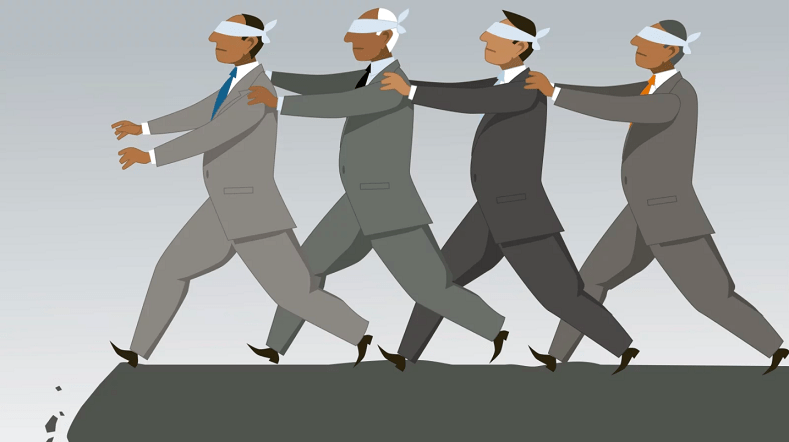What is behind mass hysteria? Mass Hysteria has interested me for a long time. I didn't understand how such a large group of people could all be experiencing such panic with nobody having rational thoughts. The definition of mass hysteria is a phenomenon that transmits an illusion of threats. These threats can be real or imaginary and they move through a population. A famous example of mass hysteria is the dancing plague. These "plagues" were spontaneous events that occurred in Europe in the middle ages. Entire communities would begin uncontrollably dancing and wouldn't stop until they collapsed from exhaustion or even died. These were the first recorded events of mass hysteria.
Dancing Plague in 1518
Group Think
There are numerous
hypotheses on why mass hysteria occurs. One of the most prevalent theories is mass hysterias connected to groupthink.
Groupthink occurs when group cohesion is valued over all else. It is a psychological drive for consensus which causes other differing thoughts to be suppressed. During an outbreak of mass hysteria, a group of individuals becomes fearful and it turns into an all-out panic. When independent thinking is suppressed everyone follows the group mentality. This leads to outbreaks of panic and fear. Furthermore, mass hysteria generally occurs after times of stress and large disaster. It can also occur within smaller groups that have strong beliefs, such as religious groups.
Anxiety
When a group of individuals is fearful or anxious about something their minds crave an explanation. With these thoughts, anxiety is increased and because of the very real symptoms so is fear. This is why mass hysteria outbreaks occur more often among children and teenagers. It also occurs in
girls more often than boys because they tend to be in more stressful situations. When people experience high anxiety or what is known as an anxiety attack they can hyperventilate. This is when someone exhales too much carbon dioxide which causes muscles to spasm. When a person hyperventilates their bicarbonate/carbonic acid equilibrium shifts this results in a drop of blood pH. This symptom can cause the person to feel as if something more serious is occurring rather than just panic and an anxiety attack. In order for these mass events to occur the climate has to be just right. With enough uncertainty, anxiety, and delusion these events occur. When people start to panic and there is no
authority to reassure them of their safety. That is when the panic spreads. Everyone follows everyone else and nobody knows what's going on.

Symptoms
A majority of the symptoms experienced when in a dissociative trance are psychological. Due to the widespread fear and anxiety, neurological problems can occur. People can experience muscle spasms, stomach cramps, fainting, and exhaustion. Often the individual makes themselves sick due to their belief that something is horribly wrong. Their mind causes a physical response. The way to address those who experience these symptoms is to address the underlying cause of their stress or anxiety.


Very interesting post! It was really cool to learn about the dancing plagues (which I may have to read about a little more).
ReplyDeleteCool post, I had no idea mass hysteria had a biological cause!
ReplyDeleteInteresting to see how anxiety and fear plays a big hand in this
ReplyDeletedancing plagues? mass hysteria causes some weird things.
ReplyDeletereally cool article
ReplyDelete